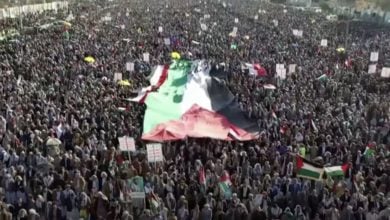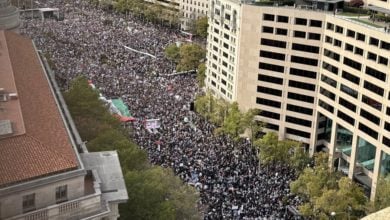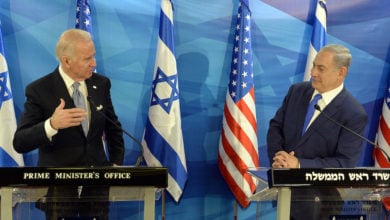Today is being remembered in the United States as the 70th anniversary of the end of the Korean War. But the bitter truth is that the war never really ended. This is true not only in the technical sense — the U.S. and North Korea have an armistice in place, but the United States refuses to sign a peace treaty — but is also demonstrated by the ongoing occupation of the South by 30,000 U.S. soldiers. And of course the cruelest expression of the war’s unresolved status is the division of Korea itself, despite the overwhelming desire of people on both sides for the reunification of their homeland.
The Korean War is often referred to in the United States as the “forgotten war.” But it is not forgotten in Korea. More than three million Korean civilians died in the war, both from direct conflict like the murderous U.S. carpet bombing campaign and from starvation caused by the war. U.S. troops also committed notorious massacres in places like No Gun Ri and Sinchon.
It is no exaggeration to characterize the actions of the Pentagon in Korea as a genocide. But don’t take our word for it. General Curtis LeMay, who commanded the U.S. Strategic Air Command during the war and went on to become one of the most prominent defenders of Jim Crow segregation, bragged in an interview in 1988: “We went over there and fought the war and eventually burned down every town in North Korea … Over a period of three years or so we killed off – what, 20 percent of the population of Korea?”
The goal of the United States in the war was to prevent Korea from becoming independent and socialist. At the end of World War II, they knew that the communist-led forces that resisted Japanese colonialism were the most popular in the country. The Pentagon immediately moved to occupy the South and install a puppet regime composed mainly of those who had been collaborators during the period of brutal Japanese rule. This imperialist division and occupation was the root of the war that broke out in 1950, and it remains at the root of the conflict today.
Ever since the 1953 armistice froze fighting in the war — but did not officially declare the war to be over — the Pentagon has maintained a massive troop presence in South Korea. It is official policy to this day that in the event of war the entire armed forces of South Korea would be placed under the command of the top U.S. general in the country. For decades, the South was ruled by brutal military dictatorships propped up by the U.S. government.
Contrary to the presentation in the corporate media, it is the U.S. government that is constantly threatening war against the North, not the other way around. The Pentagon routinely conducts “war games” involving huge numbers of troops that simulate the invasion and destruction of North Korea, including with nuclear weapons. Just earlier this month, a U.S. nuclear-armed submarine was stationed in South Korea for the first time since 1981. And the United States cynically uses South Korea as a staging ground for regional aggression — for instance with the deployment of the advanced THAAD missile system in 2016 in a move directed against China.
The Biden administration has somehow managed to be even more aggressive towards Korea than the Trump administration. Biden has shown no interest whatsoever in diplomatic talks, and has stepped up war exercises. He has also refused to lift the ban on U.S. citizens traveling to North Korea. And the Biden administration is maintaining the suffocating sanctions regime that causes huge hardship in the North.
Seventy years is long enough. It’s time for real peace in Korea. The U.S. government should sign a formal peace treaty to end the war, and refrain from any further infringement on Korean sovereignty. Sanctions on North Korea, which aim to cause suffering among the entire population, should end. And every U.S. soldier and weapon system must be immediately withdrawn.






